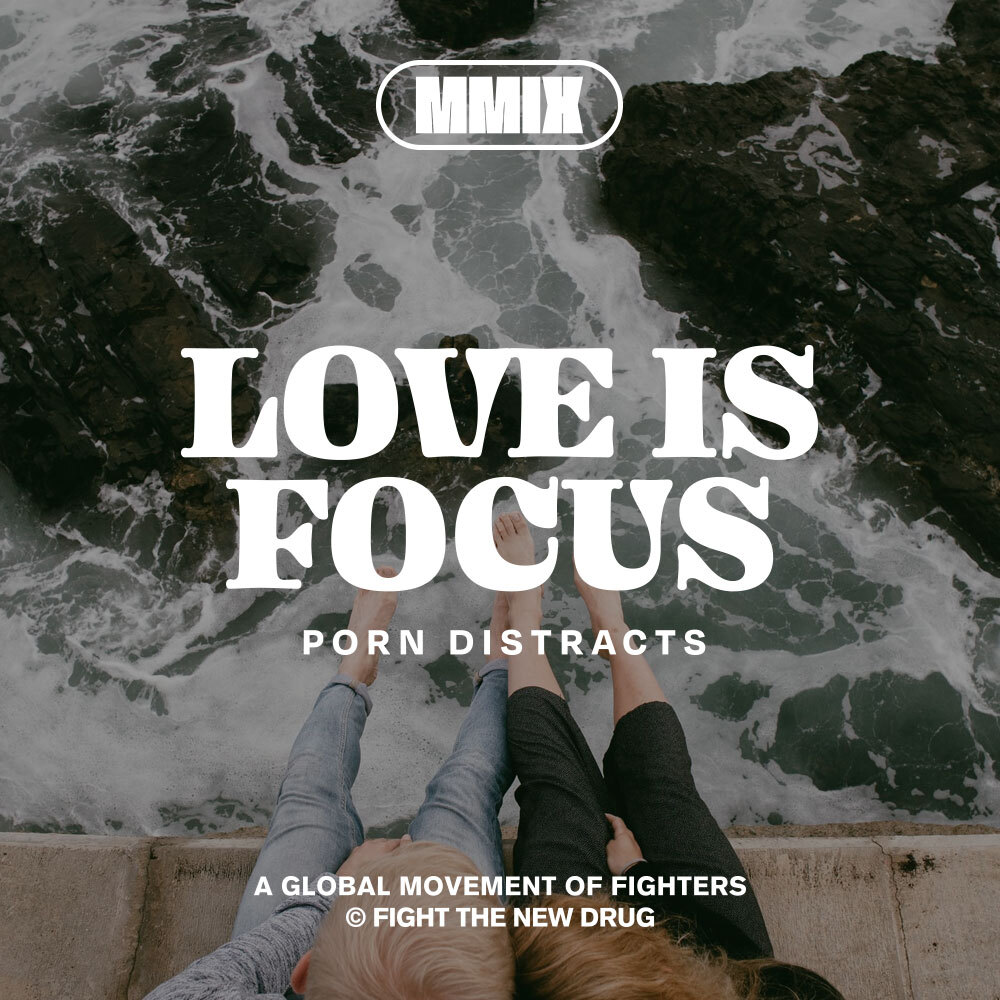“Porn is a personal choice.” “Mind your own business, porn doesn’t hurt anyone.” “If you don’t like it, don’t watch it.”
These are pretty common pro-porn arguments, and they bring up good points…but they’re points that are easily refuted by available research.
Let’s check them out.
Not just a personal habit
Here’s an inconvenient truth: porn is something anyone can choose to consume by them self, but it isn’t only a personal habit. It has the potential to affect their partner (future and present), and their relationship.
Here’s how.
Two of the most respected pornography researchers, professors Jennings Bryant and Dolf Zillman at the University of Alabama, who have studied the effects of porn and media for more than 30 years, said that when it comes to porn use “no rigorous research demonstrations of desirable effects can be reported.” [1] What several studies have found, however, is that porn consumption can cause harm not only to the consumer, but also to those closest to them—especially their partner. [2]
Related: When My Husband Listed All The Things Porn Women Had That I Didn’t
Consider how porn promotes an exaggerated, fictional version of how people look and behave, and makes everything look like an exciting reality—one that their partners often feel they can never live up to. [3]
Given that the women depicted in porn are surgically enhanced, air-brushed, and photoshopped, [4] it’s not hard to see why, according to a national poll, that only one in seven women doesn’t think that porn has raised men’s expectations of how women should look. [5]
What does the research say?
Allow us to introduce you to Drs. John and Julie Gottman, Co-founders of The Gottman Institute.
The Gottmans have conducted 40 years of breakthrough research with thousands of couples. Dr. John Gottman was one of the Top 10 Most Influential Therapists of the past quarter-century by the Psychotherapy Networker. He is the author or co-author of over 200 published academic articles and more than 40 books. Dr. Julie Gottman is a highly respected clinical psychologist, she is sought internationally by media and organizations as an expert advisor on marriage, sexual harassment and rape, and domestic violence.
Together, they are considered some of the most influential and brilliant world-renowned experts on relationships, and their resources are all about how to build and maintain successful marriages and partnerships.
So, you can see they’re both experts. But how do they feel about the effects of porn in relationships?
In 2016, they released an open letter on pornography and relationships. In a nutshell, they have concluded that, “Pornography poses a serious threat to couple intimacy and relationship harmony.”
Related: Renowned Relationship Therapists Drs. Julie & John Gottman Release “Open Letter On Porn”
From the letter: “Research on the effects of pornography use, especially one person frequently viewing pornographic images online, shows that pornography can hurt a couple’s relationship. The effect may be true, in part, because pornography can be a “supernormal stimulus’… In fact, use of pornography by one partner leads the couple to have far less sex and ultimately reduces relationship satisfaction.”
More from the Gottmans, they explain:
“When watching pornography the user is in total control of the sexual experience, in contrast to normal sex in which people are sharing control with the partner. Thus a porn user may form the unrealistic expectation that sex will be under only one person’s control… the relationship goal of intimate connection is confounded and ultimately lost.”
And for good measure, here’s one last quote from the letter that puts the nail in the coffin of the idea that porn causes no issues in relationships on its own: “When one person becomes accustomed to [being aroused] to porn, they are actually turning away from intimate interaction.”
Related: Why I Finally Stopped Watching Porn After I Saw How It Affected My Partner
As you can see, these experts have concluded not that it’s partner insecurity that causes relational issues, but the porn itself coupled with the attitudes, behaviors, and beliefs that often accompany porn consumption.
Degradation affects relationships
But it’s not only physical looks of both men and women that get distorted in porn.
Women are also generally portrayed as anxious for sex anywhere, at any time, with anyone, and they are delighted to go as long and aggressively as one man or multiple men want. They always climax, usually loudly and ecstatically, and then are immediately ready for more. They never get tired or sore. They never need a break. In fact, they never seem to need anything at all except endless sex. They are depicted as happy with whatever a man wants to do, even if it’s dangerous, painful, or humiliating. [6]
If you think those unrealistic depictions don’t work their way into consumers’ beliefs, expectations and actions—listen to this. [7] In a recent survey of 16 to 18-year-old Americans, nearly every participant reported learning how to have sex by watching porn, [8] and many of the young women said they were pressured to play out the “scripts” their male partners had learned from porn. [9] They felt badgered into having sex in uncomfortable positions, faking sexual responses, and consenting to unpleasant or painful acts.
The real issue of betrayal trauma
Of course, the pain caused by porn can go far beyond a bad experience in the bedroom.
Individuals who learn of their partner’s porn habit often internalize their shame and confusion, asking themselves why they aren’t “enough” as they are. They may feel undesirable, unattractive, and worthless. [10] Many partners of porn consumers even start showing physical symptoms of anxiety, depression, and even Post Traumatic Stress Disorder. [11] And while it’s true for both men and women, studies have shown that because of the shame they feel and their worry about being blamed for their partner’s problem, the majority of women who learn of a partner’s porn habit isolate themselves at least somewhat from their normal sources of social support, just when they need that support the most. [12]
Related: The Science Of Betrayal: The Emotional Trauma Of Having A Porn-Addicted Partner
If you’ve ever considered giving up porn for yourself, there are resources that can help you do it (and do it for free!). Check out our friends at Fortify to get started on your porn-free journey.
Trust us, it’s worth the fight.
Need help?
For those reading this who feel they are struggling with pornography, you are not alone. Check out Fortify, a science-based recovery platform dedicated to helping you find lasting freedom from pornography. Fortify now offers a free experience for both teens and adults. Connect with others, learn about your unwanted porn habit, and track your recovery journey. There is hope—sign up today.
Fight the New Drug may receive financial support from purchases made using affiliate links.
Get Help – For Partners
If your partner is struggling with porn, you are not alone—know that there is hope, and there is help. As you navigate this difficult situation, there are supportive communities and resources available to you. Below is a non-exhaustive list of several resources for those experiencing hurt because of their partner’s porn consumption. Note that this isn’t a complete resource list.
Disclaimer: For those who may find themselves involved in this sensitive situation, their responses can differ. This is why resources need to fit the specific needs of whoever is seeking them. Some of these resources are gender-specific, others are religiously-affiliated, others use a variety of approaches. Fight the New Drug is a non-religious and non-legislative awareness and education organization hoping to provide access to resources that are helpful to those who need support. Including this list of recommendations does not constitute an endorsement by Fight the New Drug.




